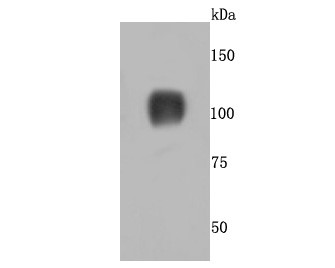
Western Blot Positive WB detected in: Rat kidney tissue All lanes: DPP4 antibody at 2.8ug/ml Secondary Goat polyclonal to rabbit IgG at 1/50000 dilution Predicted band size: 89 kDa Observed band size: 89 kDa
DPP4 Antibody
CSB-PA06229A0RB
ApplicationsImmunoFluorescence, Western Blot, ELISA, ImmunoHistoChemistry
Product group Antibodies
ReactivityHuman, Rat
TargetDPP4
Overview
- SupplierCusabio
- Product NameDPP4 Antibody
- Delivery Days Customer20
- ApplicationsImmunoFluorescence, Western Blot, ELISA, ImmunoHistoChemistry
- CertificationResearch Use Only
- ClonalityPolyclonal
- ConjugateUnconjugated
- Gene ID1803
- Target nameDPP4
- Target descriptiondipeptidyl peptidase 4
- Target synonymsADABP, ADCP2, CD26, DPPIV, TP103, dipeptidyl peptidase 4, ADCP-2, DPP IV, Gly-Pro naphthylamidase, Post-proline dipeptidyl aminopeptidase IV, T-cell activation antigen CD26, Xaa-Pro-dipeptidylaminopeptidase, adenosine deaminase complexing protein 2, dipeptidyl peptidase IV, dipeptidylpeptidase 4, dipeptidylpeptidase IV (CD26, adenosine deaminase complexing protein 2)
- HostRabbit
- IsotypeIgG
- Protein IDP27487
- Protein NameDipeptidyl peptidase 4
- Scientific DescriptionCell surface glycoprotein receptor involved in the costimulatory signal essential for T-cell receptor (TCR)-mediated T-cell activation. Acts as a positive regulator of T-cell coactivation, by binding at least ADA, CAV1, IGF2R, and PTPRC. Its binding to CAV1 and CARD11 induces T-cell proliferation and NF-kappa-B activation in a T-cell receptor/CD3-dependent manner. Its interaction with ADA also regulates lymphocyte-epithelial cell adhesion. In association with FAP is involved in the pericellular proteolysis of the extracellular matrix (ECM), the migration and invasion of endothelial cells into the ECM. May be involved in the promotion of lymphatic endothelial cells adhesion, migration and tube formation. When overexpressed, enhanced cell proliferation, a process inhibited by GPC3. Acts also as a serine exopeptidase with a dipeptidyl peptidase activity that regulates various physiological processes by cleaving peptides in the circulation, including many chemokines, mitogenic growth factors, neuropeptides and peptide hormones. Removes N-terminal dipeptides sequentially from polypeptides having unsubstituted N-termini provided that the penultimate residue is proline.
- ReactivityHuman, Rat
- Storage Instruction-20°C or -80°C
- UNSPSC41116161









